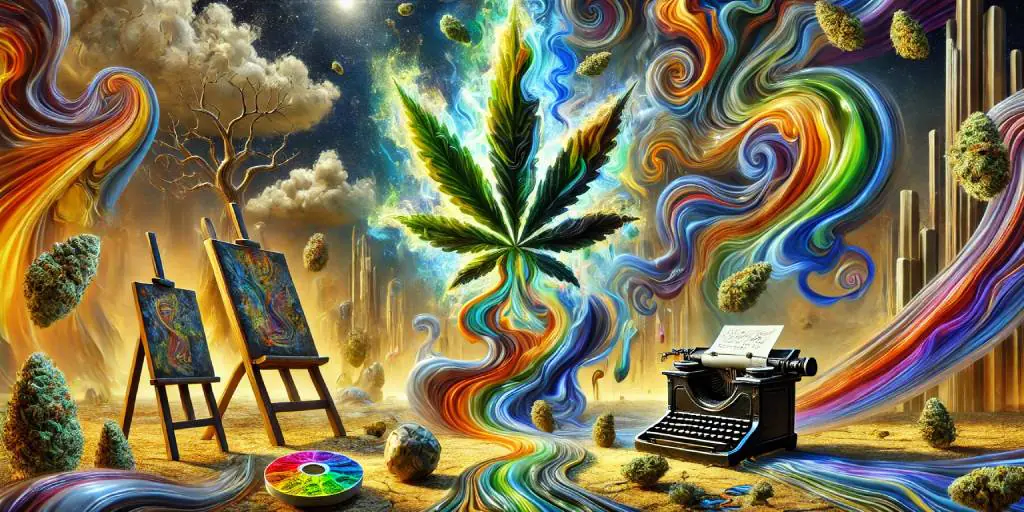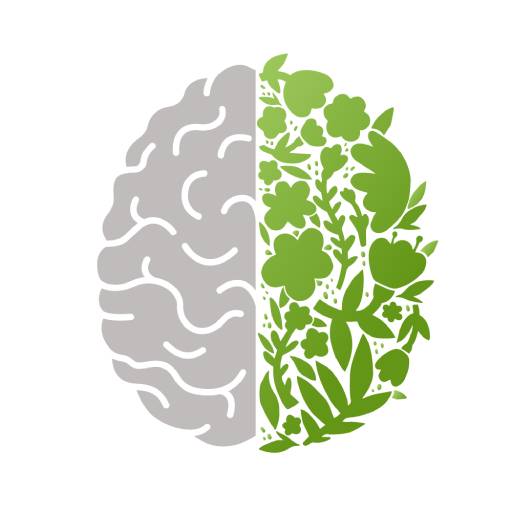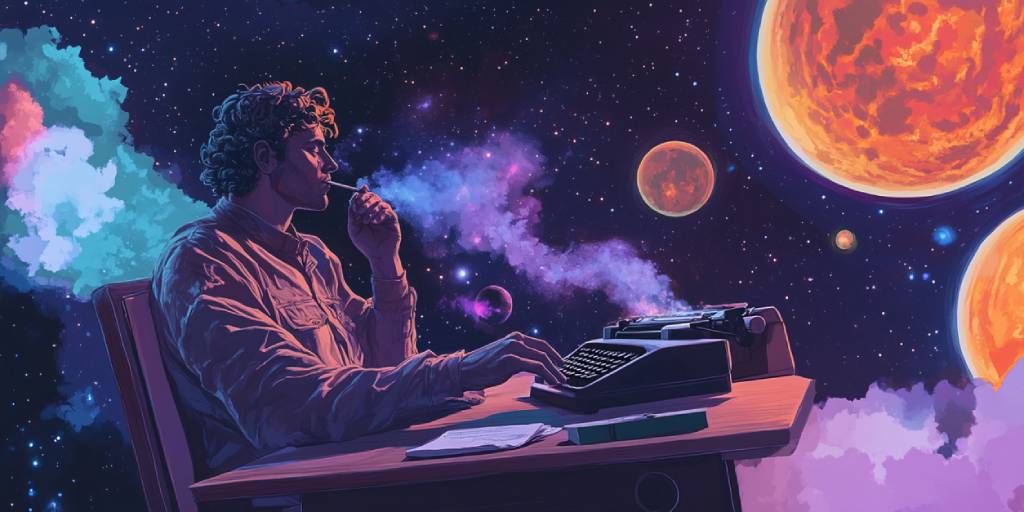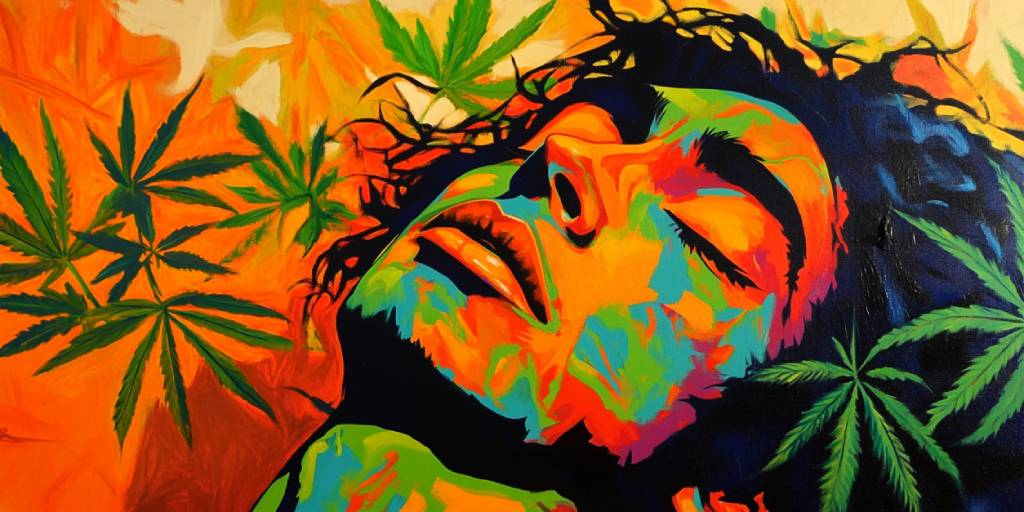
Previously, we wrote about the relationship between cannabis and music, but music is, of course, not the only creative outlet that cannabis has influenced. Artists such as writers, painters, actors, and even scientists have also shared glowing stories about the green plant. But does cannabis actually make you more creative? Or does it just give users the idea that they are more creative? In this blog, we explain.
Does cannabis inspire creativity?
Cannabis is said to give creatives just that extra push they need to create amazing music, art, or stories. But how does it work again, and why can cannabis boost creativity? To explain this, we first need to look at where creativity actually comes from. You’ve probably heard that your brain is divided into two halves. The rational, thinking half; the convergent part, and the creative, feeling, or divergent half. Convergent thinking involves finding solutions using logic and analytical reasoning. In short, numbers and facts. The characteristics of convergent thinking are:
- Efficiency: What is the fastest route from A to B? What is practical and convenient?
- Simplicity: Convergent thinking often requires a simple and clear solution.
- Focus: Convergent thinking involves working very purposefully, leaving no room for out-of-the-box solutions.
- Slowness: Finding analytical solutions to problems is a slow, conscious process.

In contrast to convergent thinking, divergent thinking adopts an exploratory approach, leaving room for new ideas and possibilities. Convergent thinking combines different perspectives, whereas with divergent thinking, your brain remains open to these perspectives. Divergent thinking also pays less attention to constraints and feasibility. The main benefits of divergent thinking are:
- Creativity: Divergent thinking stimulates deep exploration of ideas.
- Flexibility: By not focusing on obstacles but instead considering all solutions, you broaden the exploration of ideas and increase the chances of finding a suitable solution.
- Collaboration: Divergent thinking allows more room for suggestions without immediate judgment. This encourages individual contributions to solutions and ultimately group decision-making.
- Speed: The divergent brain works much faster and often more unconsciously. That’s why you can play the piano at a speed that is hard to follow but easy to feel.
Of course, both ways of thinking have their pros and cons. One method may also suit certain personalities better than the other.[1][2][3]
Why does cannabis affect your creativity?
Interesting, these brain hemispheres, but what happens after smoking a fat joint? When you consume cannabis and the psychoactive substances (mainly THC) reach your frontal lobe, you may feel more creative than usual. This is because cerebral blood flow increases. This could result in increased activity and connections that are normally less active. This gives you more capacity to create new and creative associations. It is important to note that this applies to acute use, not chronic or long-term use. Additionally, THC temporarily disrupts your structured way of processing information (convergent thinking), causing you to rely more on your divergent side.[4]
Famous Cannabis Artists
Many artists have stated that they used cannabis at some point in their careers as a source of inspiration or mind expansion. We all know the American rapper Snoop Dogg as perhaps one of the most famous proponents of cannabis use today. But he is certainly not the only or the first to incorporate cannabis into the creative process.
Music
- Bob Marley: As a follower of the Rastafari faith, the world-famous reggae artist considered cannabis sacred. He used it as a spiritual tool to strengthen his connection with Jah. A well-known quote from Bob Marley was "Herb is the healing of a nation".
- Louis Armstrong: The charismatic jazz trumpeter, always with an infectious smile, was a big fan of cannabis. Perhaps that’s why he was always so cheerful. Louis Armstrong openly talked about cannabis at a time when this was absolutely not the norm. He called it a better alternative to alcohol and said it helped him relax and find new inspiration.
Other famous and less famous musicians (if bands or groups are mentioned, then most members of those groups):
- Bob Dylan, David Bowie, John Lennon, Paul McCartney, Fleetwood Mac, Kurt Cobain, Jim Morrison (The Doors), Jerry Garcia (Grateful Dead), Janis Joplin, Keith Richards (The Rolling Stones), Eric Clapton, Tom Petty, Black Sabbath, Jack White (The White Stripes), Eddie Vedder (Pearl Jam), Thom Yorke (Radiohead), Bon Iver (Justin Vernon), Jeff Beck, Tame Impala (Kevin Parker), Pink Floyd, Willie Nelson, Rihanna, Wiz Khalifa, Jimi Hendrix, Lady Gaga, Cypress Hill, Amy Winehouse, Kid Cudi, A$AP Rocky, Erykah Badu, Miley Cyrus, Post Malone, Drake, Lana Del Rey, The Weeknd, Mac Miller, Lil Wayne, Phil Anselmo (Pantera, Down), Mastodon, Nergal (Behemoth), Trevor Peres (Obituary), Chris Barnes (Cannibal Corpse, Six Feet Under), Max Cavalera (Sepultura, Soulfly), Devin Townsend, Gaahl (Gorgoroth, Gaahls WYRD), Fenriz (Darkthrone), Sunn O))), Melvins, Neurosis, Queens of the Stone Age.

Literature
- Hunter S. Thompson: The gonzo journalist and author of the well-known book Fear and Loathing in Las Vegas had no reservations about psychoactive substances. While cannabis was just a small note on his list of daily drug intake, it was nevertheless an integral part of his preparation for the creative process.
- Carl Sagan (Mr. X): Carl Sagan wasn’t really a writer but a scientist (an astrophysicist and cosmologist, to be precise). Still, he wrote about cannabis under the pseudonym Mr. X. Carl Sagan used this pseudonym to avoid the stigma surrounding cannabis. He experimented a lot with cannabis and wrote in his essay about how it helped him gain deeper insights and think creatively, especially when writing and philosophizing.
Other writers:
- Jack Kerouac, Allen Ginsberg, William S. Burroughs, Aldous Huxley, Stephen King, Ken Kesey, Norman Mailer, Tom Robbins, Charles Baudelaire, Victor Hugo, Michael Chabon, Rick Moody, Maya Angelou, Toni Morrison, Philip K. Dick, Neil Gaiman, Margaret Atwood, George Carlin, Ernest Hemingway, Mark Twain, Patti Smith, Jean-Paul Sartre.
Visual Arts
- Jean-Michel Basquiat and Andy Warhol: Two legendary icons in the art world, known for their experimental and expressive style. Basquiat and Warhol were close friends and both used cannabis in their creative processes. They stated that it helped them think associatively and shape their visions.

Film and Media
- Woody Harrelson and Seth Rogen: The American actors cite cannabis as one of their most important sources of inspiration and relaxation. Not only do they use cannabis in their daily lives, but they are also cannabis activists. They advocate for acceptance and full legalization of cannabis in the United States.
Cannabis users feel more artistic
Despite the overwhelmingly positive sentiment many artists express about cannabis, it cannot be definitively established that cannabis actually makes you more creative. As previously mentioned, this is due to the difference between acute and chronic use and the fact that a too-high dose of THC can also have a weakening effect on divergent thinking. Still, there are some important reasons why cannabis is so strongly associated with creativity:
- Cannabis often has a positive effect on mood. Users feel happier, more relaxed, or cheerful, which obviously helps in creating creative work.
- Another remarkable phenomenon is that cannabis users rate their own work and that of others as more creative than non-users do.
In other words, you could say that cannabis users are more open in their interpretation and appreciation of creative work. This does not mean that the creations are actually more creative, but rather reflects how cannabis users perceive creative work in general.[5]
Which cannabis strains enhance creativity?
Generally, sativa-dominant strains are recommended because they are usually more energizing and uplifting than indicas, which tend to be more relaxing. A few recommendations are:
Microdosing cannabis with a vaporizer
Many people use cannabis in very small doses to remain focused and avoid being overwhelmed by the effects. This subtle effect is said to support them in the creative process. A microdose of cannabis is about 5 milligrams. The vaporizers from DynaVap are ideal for microdosing, thanks to their adjustable oven.
Sources
- LaFrance, E. M., & Cuttler, C. (2017). Inspired by Mary Jane? Mechanisms underlying enhanced creativity in cannabis users. Consciousness and Cognition, 56, 68–76.
- Magrabi, T. (2024, October 7). Creativity and Cannabis: Does Weed Enhance Creative Skills? Leafwell.
- Convergent vs Divergent Thinking: The Key Differences. (2024).
- Ogunbiyi, M. O., Hindocha, C., Freeman, T. P., & Bloomfield, M. A. P. (2020). Acute and chronic effects of Δ9-tetrahydrocannabinol (THC) on cerebral blood flow: A systematic review. Progress in Neuro-Psychopharmacology and Biological Psychiatry, 101, 109900.
- Dolan, E. W. (2023, April 20). Cannabis use does not increase actual creativity but does increase how creative you think you are, study finds. PsyPost - Psychology News.